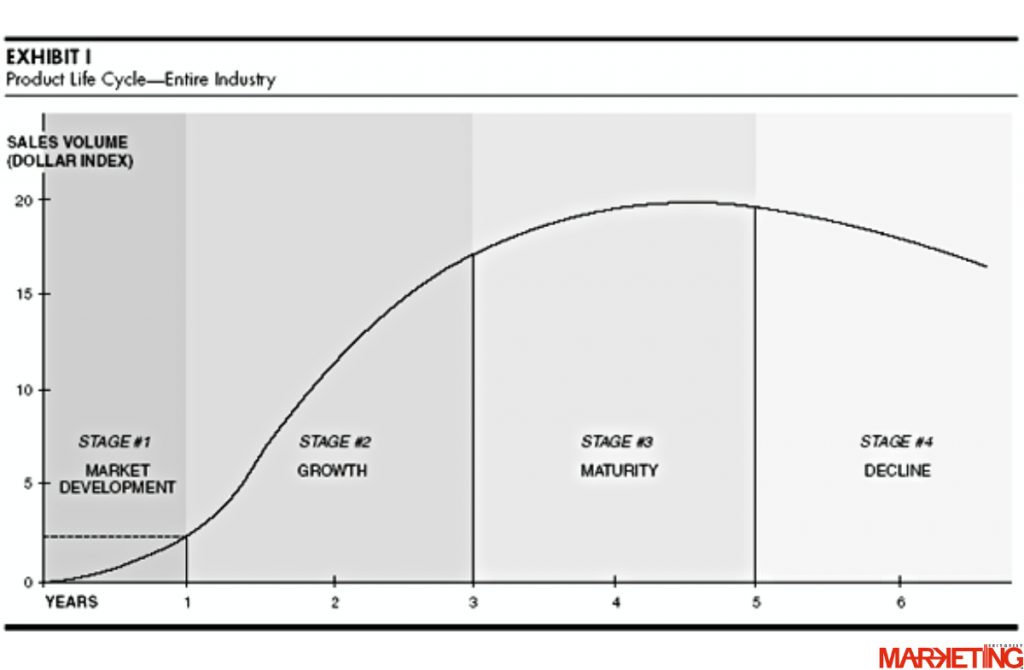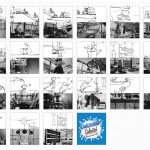Facebook, Twitter, Instagram, Snapchat, TikTok and the list goes on.
Will this trend end or will it continue to evolve?
Which one of these will become a favourite and which one of these will fade away?
According to a survey by Harvard Business Review, senior marketing executives are familiar with the concept of the Product Life Cycle. However, they do not use it in any tactical or strategic ways. This simply means that many marketeers are aware of this theory, yet it is hardly used productively or effectively.
The Product Life Cycle and Its Benefits

The traditional product life cycle has four stages: (1) market development or introduction, (2) market growth, (3) market maturity, and (4) market decline. The goal for marketeers is to speed through stage one, increase the momentum in stage two, extend the length of stage three and ease the pace of stage four.
The benefits of looking at marketing from the lens of the product life cycle are ample. Once the product is introduced to the market, the life cycle enables marketeers to understand how the product can enjoy a long and profitable life. It also allows marketeers to identify the stage the product is in, so that communication to the customers can be done persuasively. Through the product life cycle, marketeers can also spot the early indications of a forthcoming transition to a new stage and propose how marketing campaigns can adapt to that transition.
So, what is Design Thinking and how does it help in exploiting the Product Life Cycle?
Design Thinking is a five-phase solution-based approach which is extremely useful in tackling ill-defined problems, by reframing problems in human-centric ways and creating various ideas through brainstorming. The non-linear Design Thinking approach also involves ongoing experimentation through prototyping and continuous testing.
The first phase in design thinking is empathy. Empathy is the ability to put yourself in another person’s shoes, to truly see the world through their eyes. Empathy is also often what drives us to act as we are compelled to relieve the suffering or struggles of others in some way. During this phase, marketeers can spend time getting to know their potential customers, especially in understanding their needs and wants. In this phase, marketeers are encouraged to engage with people on a psychological and emotional level.
Hence, in building empathy, marketeers can create or develop products in the market development stage that will truly satisfy their potential customers and make their lives easier. Empathy can also come in handy at the market maturity stage, where marketeers can use this phase to understand the needs or wants of the customers to extend the third stage of the product life cycle.
The second phase in design thinking is define. The define phase ensures that marketeers can fully understand the goal of the product, guided by problem statements that will steer the process in the right direction. A good problem statement is human-centred and user-focused, not just centred on product specifications or business outcomes.
Therefore, in this phase, marketeers can continue to progress in the right direction while attempting to discern the gaps of customer needs and wants in the market. Defining the gaps will aid not only the market development stage of the product life cycle, but can also assist in understanding the precise reasons behind the decline stage.
Ideation is the third phase in design thinking. In this phase, marketeers are pushed to explore and come up with as many ideas as possible, as a potential solution for the problems earlier stated in the define phase. The main aim of this ideation phase is to discover new angles and avenues to close the gap in the market. This ‘judgment-free’ phase is usually where breakthroughs come from. This is where marketeers reformulate their beliefs while redefining existing solutions.
Thus, through the generation of ideas from this phase, the product life cycle can be prolonged – especially in the second and third stages of the product life cycle; market growth and market maturity.
Prototyping is the fourth phase in design thinking which allows marketeers to determine if the product is created in the way it was intended, while the final phase in design thinking is testing. The prototyping and testing phases usually work hand-in-hand and can help marketeers gain insights on how customers may react to the product and help rectify existing flaws.
These two phases enable marketeers to refine, rework and improve the products to see which version works best while improving customer satisfaction. This may help alleviate the deterioration of product demands while easing the decline stage of the product life cycle.
In today’s world, we are living in many complexities. These complexities can be unravelled through the lens of empathy, which is the foundation of design thinking. As quoted by Donald A. Norman, ‘We must design for the way people behave, not for how we would wish them to behave’.
Dr Jesrina Ann Xavier (pictured on top) is a Senior Lecturer at the Faculty of Business and Law, Taylor’s University and a Member of the Centre for Industrial Revolution and Innovation (CIR4I). She has been in academia for more than ten years. She is also an active researcher and a Design Thinking aficionado.

APPIES Asia Pacific 2022 is happening in Malaysia!
Submission deadline has been extended to January 31, 2022.
Visit appies.asia for details, registration and submissions NOW!
MARKETING Magazine is not responsible for the content of external sites.









